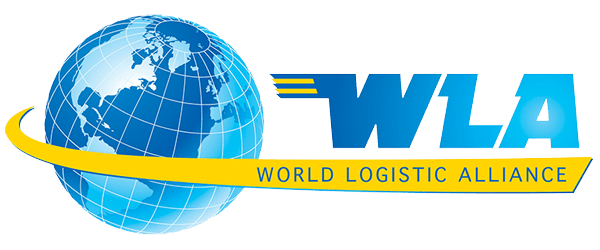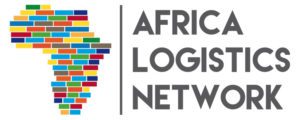Frequently Asked Questions
Find here our answers to some frequently asked questions regarding shipping containers to Africa.
We offer transport solutions from/to any port in the world and in Africa, we serve more than 70 ports covering all African countries including landlocked countries. Check our destination section on the website for more information.
At the time of booking, we will inform you of the ETA (Estimated Time of Arrival) of your goods at destination. We will give you the container number as well as the bill of lading number which will enable you to track your cargo via our tracking platform on our website.
For every shipment you need to send us a packing list that mentions all goods loaded in the container, the full details of exporter (name, complete address, city, country, Tel number and email), the full details of receiver at destination (name, complete address, city, country, Tel number and email).
For all type of vehicles transported we need the chassis nr, the brand/model and a copy of the vehicle papers. See next section for the type of cargo that has specific extra requirements.
VEHICLES
For every vehicle (car, truck, scooter, motorcycle, etc …) you need to send us a copy of the vehicle papers where essential information such as the chassis number, vehicle brand and model, colour, built year, etc are mentioned. This is mandatory for all vehicle transports either via Ro/Ro vessel or when shipped in a container.
Please note that for all vehicles the battery needs to be disconnected and the fuel tank must be empty.
Some shipping line require pictures of the battery disconnected, the chassis nr, the fuel gauge and the vehicle papers together with the shipping instructions.
Some countries have restrictions and do not accept vehicles older than 5,8 or 10 years. You need to comply with the export and import requirements of the origin and destination countries.
CAR TIRES
The export from Switzerland of duplicated and tripled tires (tires pressed into each other) without export license is prohibited. The tire profile must be of at least 1,6 mm.
Some countries do not allow the import of used tires. You need to comply with the export and import requirements of the origin and destination countries.
USED ELECTRICAL/ELECTRONIC GOODS
If you are shipping used electrical or/and electronic equipment, you must make sure that you meet the export and import requirements of the origin and destination countries for shipping such items.
The goods need to be in working good condition and upon request, you can be asked by customs to provide a testing certificate or a paper confirming that each item is fully functional.
Waste electronic/electrical items are not allowed to be exported. Only FCKW free freezers and fridges are allowed to be exported.
PROHIBITED GOODS / DANGEROUS CARGO
Some goods are considered as dangerous cargo due to a risk of explosion, fire, leakage, corrosion or potential damage to the containers or vessel’s structure.
Paint, glue, batteries, gas cylinders, flammable liquids, acids, pesticides, petroleum products, etc. are not accepted and cannot be loaded in containers unless duly declared with all dangerous goods documentation provided (UN number, class nr, package group).
This type of cargo is subject to a dangerous goods surcharge applied on top of the standard freight rates by the shipping lines and loading is subject to the approval of the shipping line.
Any fine and/or extra costs that may arise due to non-declaration or partial declaration of dangerous goods inside a container will be passed to the shipper mentioned on the bill of lading and legal actions may be taken against you.
No, insurance is not included in our rates. However, if needed, we can assist you and provide an insurance for your transport with our insurance partner. The cost of the insurance is a percentage of the value of the goods.
For cargo from Europe we take care of the export customs declaration and transit documents and this service is included in our prices.
For cargo from Africa, our local partners can assist you with this process and costs are always to be considered on top of the transport prices.
Some countries in Africa require for both imports and exports an electronic tracking number, usually known as ECTN or CTN but also called FERI in DR Congo, CNCA in Angola, BESC in Benin, Cameroun, Gabon and other French speaking countries.
We can assist you and prepare this mandatory document for you at an additional cost which depend on the origin of the cargo, the type of container and the destination country.
The ideal type of container for your shipment depends on the dimensions of the cargo (L x W x H), the volume in m3 and the weight.
If the cargo is more than 30 m3 and weighs less than 26 tonnes, a 40-foot container is suitable.
If the cargo has a volume up to 30 m3, the most appropriate container would be a 20-foot container.
There are as well other container types that can be used for OOG (out of gauge) cargo or refrigerated cargo.
We operate in the whole African continent, but also worldwide.
Our primary focus lies on transport solutions from and to any port in the world and Africa.
We offer shipments to more than 70 ports covering all African countries and provide further transport to all landlocked countries.
At the time of booking, we will notify you of your goods’ ETA (Estimated Time of Arrival) at the destination.
You will have the container’s number and the Bill of Lading BL number, with which you can track your container via our tracking platform on our website at any time.
Some African countries require for imports and exports an electronic tracking number, usually called ECTN or CTN but also called FERI in DR Congo, CNCA in Angola, BESC in Benin, Cameroun, Gabon, and other French-speaking countries.
We can assist you and prepare this mandatory document for you at an additional cost depending on the cargo’s origin, the type of container, and the destination country.
ACS Africa Container Shipping will organize either the entire route of your car’s shipment to Africa or parts of the route. We offer car shipping either by RORO or in a container. We will assist you with all the specific requirements that need to be met at the country of origin as well as at the country of destination.
These include:
- Mandatory information for all vehicle transports (car, truck, scooter, motorcycle, etc.) either via RORO vessel or when shipped in a container: copy of the vehicle papers with essential information such as the chassis number, vehicle brand, vehicle model, color, and built year visible.
- Please note that the battery needs to be disconnected for all vehicles, and the fuel tank must be empty. (Applies only for containerized transport).
- Some shipping lines require pictures of the battery disconnected, the chassis number, the fuel gauge, vehicle papers, and shipping instructions. (Applies only for containerized transport)
- Some countries have restrictions and do not accept vehicles older than 5,8, or 10 years. You need to comply with the export and import requirements of the origin and destination countries.
ACS Africa Container Shipping will organize either the entire route of your goods’ shipment to Africa or parts of the route. We will assist you with the export and import requirements of the origin and destination countries.
Please note that if you are shipping used electrical or electronic equipment, you must meet the export and import requirements of the origin and destination countries for shipping such items:
- The goods need to be in good working condition, and upon request, you can be asked by customs to provide a testing certificate or a paper confirming that each item is fully functional.
- Waste electronic/electrical items are not allowed for export. Only FCKW free freezers and fridges are allowed for export.
Some goods are considered dangerous cargo due to a risk of explosion, fire, leakage, corrosion, or potential damage to the containers or vessel’s structure.
These include:
- Paint
- Glue
- Batteries
- Gas cylinders
- Flammable liquids
- Acids
- Pesticides
- Petroleum products
- Other dangerous goods
These dangerous goods cannot be loaded in containers unless duly declared with all dangerous goods documentation provided (UN number, class number, package group).
If this type of cargo is to be shipped, it is subject to a dangerous goods surcharge applied on top of the standard freight rates by the shipping lines. Loading is subject to the approval of the shipping line.
Please note that any fine and/or extra costs that may arise due to non-declaration or partial declaration of dangerous goods inside a container will be passed to the shipper mentioned on the bill of lading, and legal actions may be taken against you.
ACS Africa Container Shipping takes care of the export customs declaration and transit documents for cargo originating in Europe. This service is included in our prices.
For cargo originating in Africa, our local partners will assist you with this process . The costs associated are added to your freight fees.
Some African countries require for imports and exports an electronic tracking number, usually called ECTN or CTN but also called FERI in DR Congo, CNCA in Angola, BESC in Benin, Cameroun, Gabon, and other French-speaking countries.
We can assist you and prepare this mandatory document for you at an additional cost depending on the cargo’s origin, the type of container, and the destination country.
The ideal type of container for your shipment depends on the dimensions of the cargo (L x W x H), the volume in m3, and the weight.
- If the cargo is more than 30 m3 and weighs less than 26 tons, a 40-foot container is suitable.
- If the cargo has a volume of up to 30 m3, the most appropriate container would be a 20-foot container.
- Other container types can be used for OOG (out-of-gauge) or refrigerated cargo.



